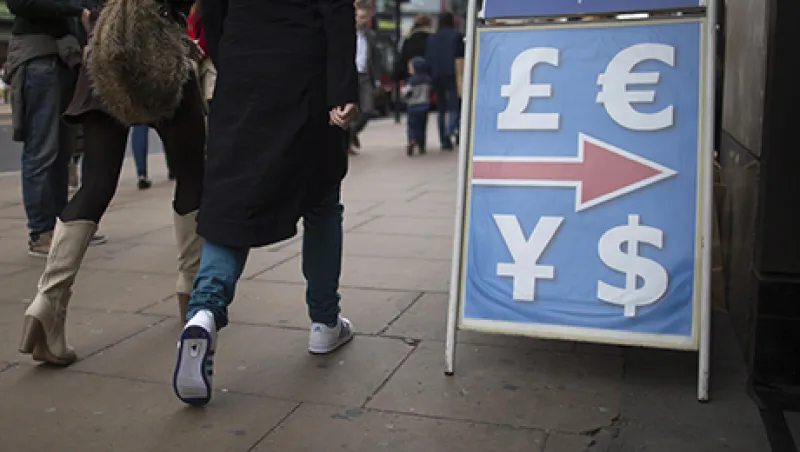As record low volatility in the foreign exchange market has driven traders away, global currency-trading volume is slipping. Marc Chandler, global head of currency strategy for New York–headquartered private bank Brown Brothers Harriman, has experienced the decline firsthand. “The bank gives me some money to trade, but this year I’m hardly trading,” he says.
This bad news from financial institutions’ currency-trading departments, which need volume and volatility to make money, augurs poorly for short-term speculators. But it’s good news for multinational corporations and long-term international investors, which will have less need to hedge their currency exposure. In any case, market participants expect volume and volatility ultimately to return, as more players and currencies enter the market.
“Low volume tends to beget low volume,” says Robert Sinche, global strategist for broker-dealer Pierpont Securities in Stamford, Connecticut. “A lot of the short-term volume would normally come from the active investing community, like hedge funds. But the abundant credit means less participation in markets and smaller speculative positions.” That drop in trading volume is self-reinforcing. Short-term speculators are getting driven out of the market, says Sinche. Several major currency hedge funds — including FX Concepts, once the world’s largest — closed shop over the past year.
“Macro funds haven’t had much to work with since 2013, when shorting the yen was a winning trade,” says David Gilmore, a partner and economist at Foreign Exchange Analytics, a currency research firm in Westbrook, Connecticut.
Meanwhile, banks are cutting their trading operations as regulation limits speculative activity. For example, the Volcker Rule of the 2010 Dodd–Frank Wall Street Reform and Consumer Protection Act restricts banks’ ability to take proprietary currency positions. “Capital to run trading operations is being put to use elsewhere, where there is more income,” Gilmore says. “Regulators want to shut down the casino element of the marketplace.”
To some extent, the drop in currency-trading volume simply reflects the shrinkage of an overgrown financial sector. “The financial sector is still too large relative to the economy it’s meant to support, so reversion to that mean will affect more than just currency volume,” Gilmore says. “Fixed income and commodities are in the same predicament.”
Some in the financial world stand to benefit from the slow times in currency trading, however. Thanks to the drop in volatility, multinational corporations and long-term investors don’t have to worry so much about hedging their currency exposure.
“It’s not necessarily a bad thing,” Sinche says. “The real investment world can focus on the underlying investment.”
Is this the new normal or just a phase? Chandler, Gilmore and Sinche agree that currency-trading volume will remain sluggish until central banks’ monetary policies begin to diverge. Many economists expect the Bank of England to begin raising interest rates in the first quarter of 2015, and the Federal Reserve to follow suit in the second or third quarter.
“Maybe in the middle of next year, volume will increase again,” Chandler says. He doesn’t think we’ve seen the peak of currency turnover yet. “But I suspect the drivers of trading volume will change,” he continues. “When I started in the business in the mid-1980s, banks were dominant. But now there’s a rise of retail and high frequency trading.” As an example of retail trading, he cites the growth of currency-focused exchange-traded funds.
In addition, despite the loss of many European currencies with the 1999 introduction of the euro, plenty of currencies are becoming tradable in emerging markets, frontier markets and markets that are even smaller still. “Currencies that can’t be traded now, will be, over time,” says Chandler. “Economies will mature and adopt better practices.”
Get more on foreign exchange.







